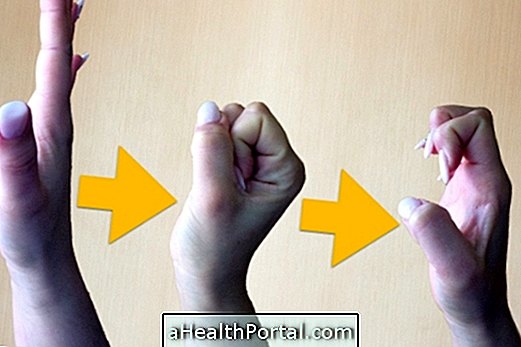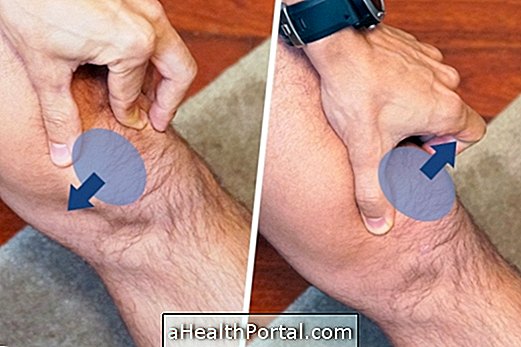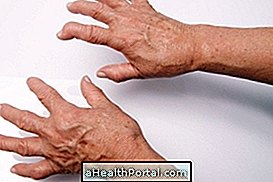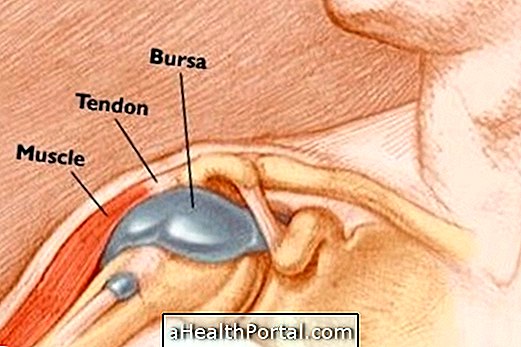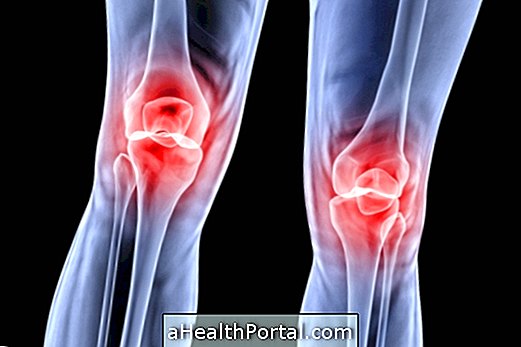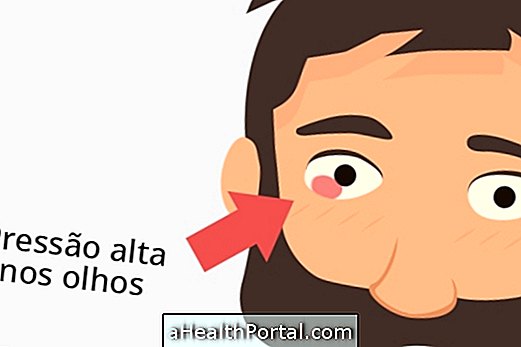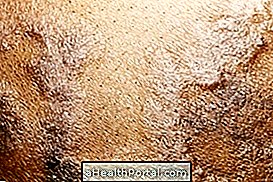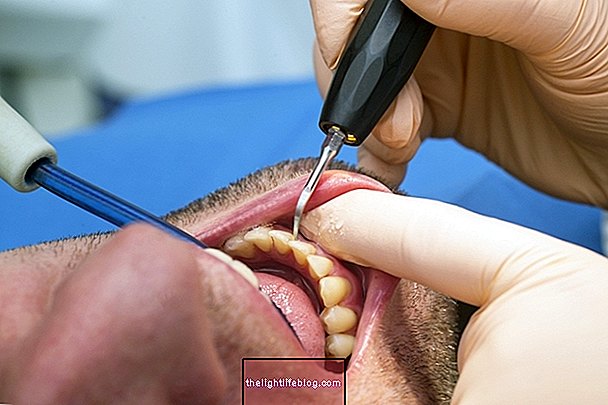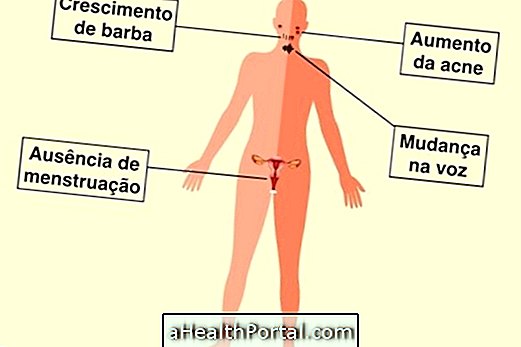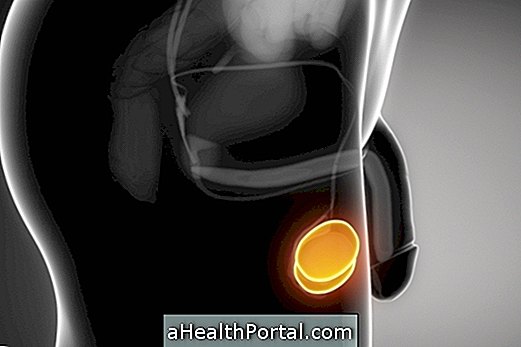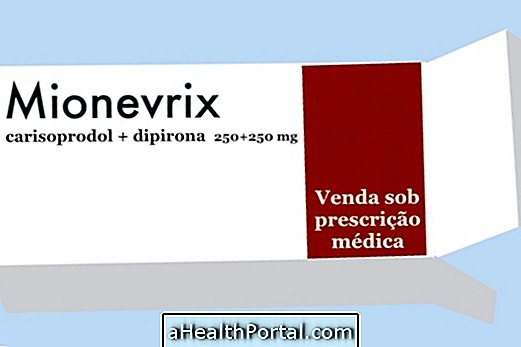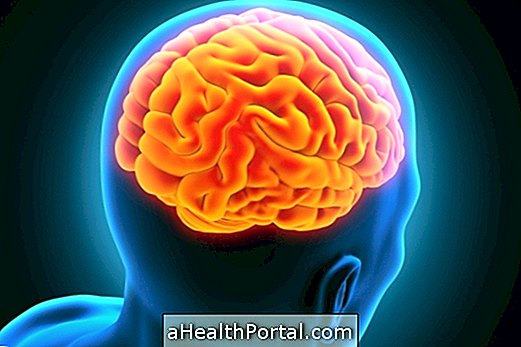Physical therapy is excellent for the treatment of herniated disc and can be done with stretching and strengthening exercises, electronic equipment, use of warm compress. Other techniques that may be useful are Pilates, hydrotherapy, RPG and traction in the spine, for example.
The sessions can be performed daily on a weekend, when the person is experiencing a lot of pain, but can be performed only once or twice a week when the pain appears only in certain situations such as lowering or lifting some weight off the floor, for example.
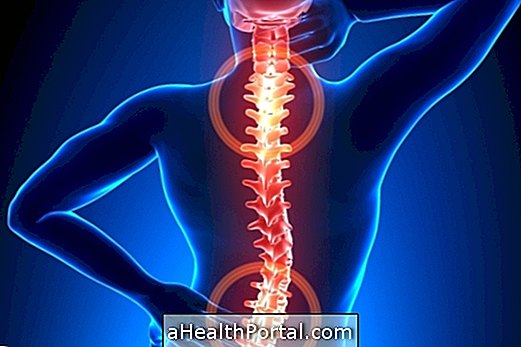
Benefits of physical therapy in herniated disc
Physical therapy for herniated discs has the following benefits:
- Relief of back pain and radiated pain for arms or legs, for example;
- Increased range of motion;
- Greater physical resistance;
- Avoid surgery on the spine;
- Decrease medication intake for pain control.
The disc herniation happens when the disc that lies between the vertebrae of the spine are damaged and can cause compression of the root of a nerve, for example. Usually before discovering hernia, about 10 years before there was some pain in the spine. The spinal regions most affected are cervical and lumbar.
6 ways to treat herniated disc
Within the physiotherapy can be used several resources to combat pain and bring back the balance and well-being of the person who has herniated disc. Some possibilities of treatment for people with intense pain are:
1. Use of electronic equipment
Apparatus such as ultrasound, galvanic current, TENS and laser can be used as anti-inflammatories that help relieve symptoms by reducing pain and discomfort in the spine. They should be applied according to the need that the person presents, and their time of operation varies between 8 to 25 minutes, for each treatment area.
2. Heat
It is another way to relieve back pain and prepare the body for a massage because it increases blood circulation and the arrival of more nutrients to the tissues. The heat can be used with heated pockets or towels or infrared light, for example for some 20 minutes.
3. Stretching
Stretching exercises are indicated from the beginning of physical therapy sessions and are important for increasing flexibility, normalizing muscle tone and reorganizing muscle fibers, and are also excellent for improving body posture on a day to day basis.

4. Exercises
They are indicated for when the person does not present acute pain and help to strengthen muscle groups that are weak or unbalanced. There are several types of exercises that can be used, such as Global Posture Reeducation, Clinical Pilates and Hydrotherapy, for example, these last 2 can also be used as physical activity.
RPG exercises are monotonous, but they are a great help, being one of the best options to avoid having to undergo surgery for herniated disc. Pilates exercises are particularly indicated because they strengthen the small but important muscles that keep the back straight and the strength of the abdomen, which also protects the spine. Hydrotherapy is performed within the pool, being guided by a physiotherapist and consists of exercises that involve running within the water and even swimming.
In this video I indicate some exercises for sciatica, which are indicated in case of herniated disc:

5. Cervical or lumbar traction
This is a type of treatment that can be performed manually, where the physiotherapist firmly holds the person's neck lying on a stretcher, keeping the entire spine aligned and pulls the head vertically, to promote a release of tension between the vertebrae, allowing greater hydration of the vertebral disc and sometimes its return to the original location. The traction of the spine can also be performed on specific equipments that act in the same way, tractioning the neck in one direction and lumbar in the opposite direction, maintaining the traction for 20 to 30 seconds, for about 5 to 10 repetitions, for example.
6. Handling techniques
Handling techniques can be performed on the spine and serve to decrease pressure on the spine, realign all structures of the body and often cause a sensation of lightness and ease of movement. This technique is particularly suitable for when the person has difficulty performing certain movements because he feels 'trapped'.
Each physical therapy session should be individualized and lasts about 1 hour, but in addition certain exercises should also be performed at home, when indicated by the physiotherapist.
Day Care
A person who has a cervical or lumbar hernia needs some care that can help with pain relief, such as:
- Avoid staying more than 2 hours sitting or lying down, provided it is not to during sleep;
- Sleep in the correct position of the column;
- When lowering to get something off the ground, always bend your legs rather than bend your body forward;
- Prefer to keep moving to decrease spine stiffness, may be walking or cycling, for example;
- Prefer a firm mattress that supports improved spine, also avoid sitting on sofas and very soft and low chairs;
- Anti-inflammatory foods, such as ginger and salmon, are best indicated whenever you are in a spinal crisis.
Check out these and other tips in the following video:

Exercising such as jumping rope or jumping classes in the fitness center are not the most advised because they can favor disc compression by starting a new pain picture. Already exercises in water, such as water aerobics are more indicated because inside the water the body becomes lighter, not having as much impact on the joints and spine.
